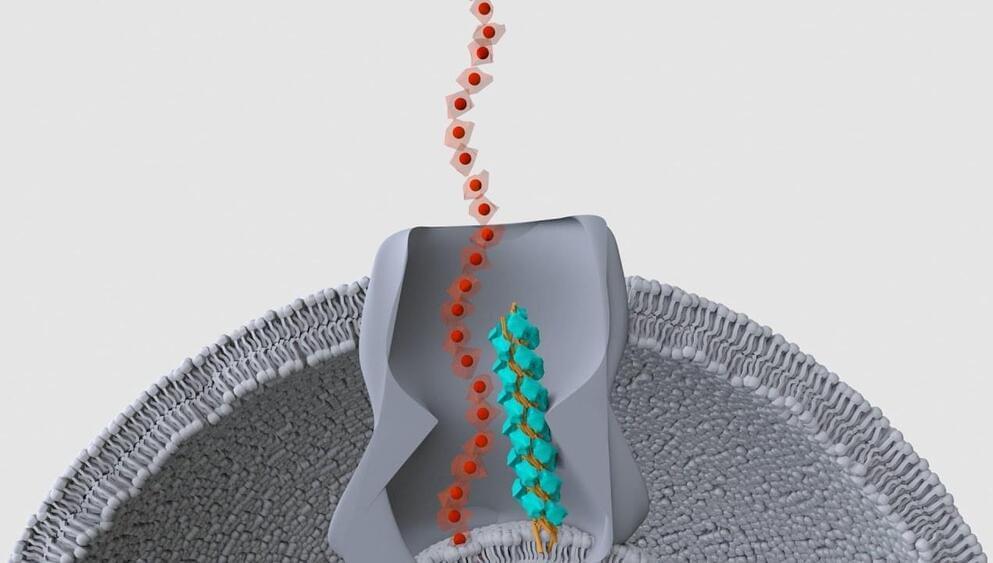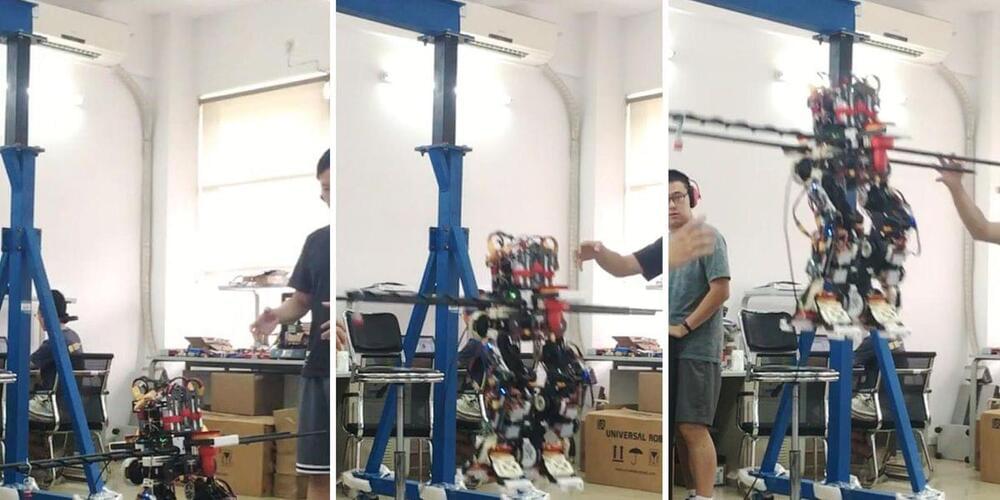Page 5290
Sep 1, 2021
Hidden bacterial hairs power nature’s ‘electric grid’
Posted by Jason Blain in categories: chemistry, energy, nanotechnology

A hair-like protein hidden inside bacteria serves as a sort of on-off switch for nature’s “electric grid,” a global web of bacteria-generated nanowires that permeates all oxygen-less soil and deep ocean beds, Yale researchers report in the journal Nature. “The ground beneath our feet, the entire globe, is electrically wired,” said Nikhil Malvankar, assistant professor of molecular biophysics and biochemistry at the Microbial Sciences Institute at Yale’s West Campus and senior author of the paper. “These previously hidden bacterial hairs are the molecular switch controlling the release of nanowires that make up nature’s electrical grid.”
Almost all living things breathe oxygen to get rid of excess electrons when converting nutrients into energy. Without access to oxygen, however, soil bacteria living deep under oceans or buried underground over billions of years have developed a way to respire by “breathing minerals,” like snorkeling, through tiny protein filaments called nanowires.
Continue reading “Hidden bacterial hairs power nature’s ‘electric grid’” »
Sep 1, 2021
EdTech language platform Duolingo ups the AI ante
Posted by Jason Blain in categories: education, robotics/AI
I actually like this program.
“It watches what you’ve done in the past, what you’ve gotten right, and what you’ve gotten wrong,” he explained. “And then it tries to give you things that are not too easy or not too hard, but are sort of what educational psychologists would say are in your ‘zone of proximal development.’”.
In the wake of a noted IPO, EdTech player Duolingo showed off AI-infused updates to its language lesson platform.
Circa 2017
Lasers that ‘softly’ burn paper could be the next evolution in printing. Former students of the University of Technology in Delft, Netherlands, have developed a technology that can print on any kind of paper without consumables, such as toner or ink.
This technique is not unlike burning paper using a magnifying glass and sunlight.
Sep 1, 2021
One tough bird: vulture’s genes help it thrive on rotting flesh
Posted by Quinn Sena in categories: biotech/medical, food, genetics
Circa 2015 Clues of the genetic material in vultures could give rise to humans that have immunity to nearly all bacteria and viruses.
WASHINGTON WASHINGTON (Reuters) — A diet of putrid rotting flesh may not be your cup of tea, but to the cinereous vulture, found across southern Europe and Asia, it is positively delightful. This tough bird, it turns out, is genetically wired to thrive on the stuff.
Researchers on Tuesday said they have sequenced the genome of this big scavenger, also called the Eurasian black vulture, identifying genetic traits that account for a stalwart stomach and powerful immune system that let it carry on eating carrion.
Continue reading “One tough bird: vulture’s genes help it thrive on rotting flesh” »
Sep 1, 2021
New gene therapies may soon treat dozens of rare diseases, but million-dollar price tags will put them out of reach for many
Posted by Jason Blain in categories: biotech/medical, genetics, health, policy
Why not eradicate disease for everyone?
Zolgensma – which treats spinal muscular atrophy, a rare genetic disease that damages nerve cells, leading to muscle decay – is currently the most expensive drug in the world. A one-time treatment of the life-saving drug for a young child costs US$2.1 million.
While Zolgensma’s exorbitant price is an outlier today, by the end of the decade there’ll be dozens of cell and gene therapies, costing hundreds of thousands to millions of dollars for a single dose. The Food and Drug Administration predicts that by2025it will be approving 10 to 20 cell and gene therapies every year.
Sep 1, 2021
Why Bill Gates Is Buying Up U.S. Farmland
Posted by Derick Lee in categories: economics, food, sustainability

Bill Gates made headlines for becoming the largest private farmland owner in the U.S. But he’s not the only one. Some of the wealthiest landowners including Jeff Bezos, John Malone and Thomas Peterffy are buying up forests, ranches and farmlands across the United States. Why? Watch the video to find out.
Investments in farmland are growing across the country as people, including the ultra-wealthy like Bill Gates, look for new ways to grow their money.
Continue reading “Why Bill Gates Is Buying Up U.S. Farmland” »
Sep 1, 2021
HUGE *SOS STRANDED* sign found in REMOTE desert on Google Earth! How did they get there?
Posted by Quinn Sena in category: futurism
Sep 1, 2021
Doctors Claim to Have Discovered How to Reverse Cell Aging
Posted by Quinn Sena in categories: biotech/medical, life extension, neuroscience
In order to find a way to trick the body into making new B cells, the researchers probed one of the ways that the body naturally replenishes its supply. Patients undergoing treatment for multiple sclerosis had their MBC stock depleted, at which point their body rapidly started to produce new B cells.
The team identified the specific hormones that shut B cell production down again once stores were replenished, and realized that deactivating the hormone results in the body producing extra B cells left and right. And going forward, they hope to turn that hormonal trick into a new rejuvenating treatment for the elderly and immunocompromised.
“We found specific hormonal signals produced by the old B cells, the memory cells, that inhibit the bone marrow from producing new B cells,” Melamed told The Jerusalem Post. “This is a huge discovery. It is like finding a needle in a haystack.”
Sep 1, 2021
Astronomers Use “X-Ray Magnifying Glass” To Enhance View of Distant Black Holes
Posted by Saúl Morales Rodriguéz in category: cosmology
Astronomers have used an “X-ray magnifying glass” to study a black hole system in the early Universe. The amplification and magnification of light by an intervening galaxy allowed the detection of two distant X-ray-emitting objects. The objects are either two growing supermassive black holes.
















